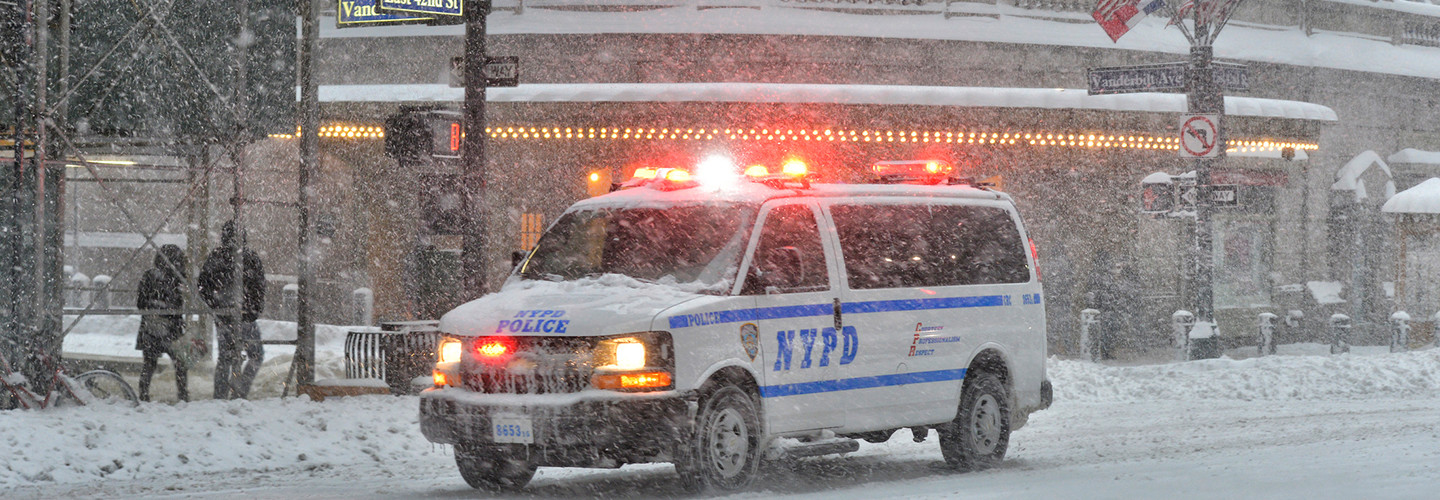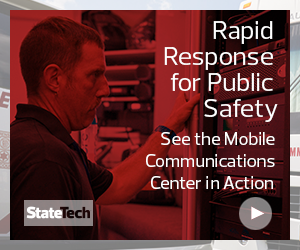Communities depend on first responders when natural disasters strike, and public safety agencies must also prepare for the possibility that severe weather could cripple their information systems.
Enter the National Law Enforcement Telecommunications System, which provides police and fire departments with the capabilities to accurately respond in an emergency while also ensuring data recovery in a disaster.
NLETS offers public safety agencies an automated secure alarm protocol, which automates transmissions from alarm monitoring central stations to emergency call operators. Use of the ASAP system ensures that first responders receive an exact address that has been verified, said Scott Edson, executive director of the Los Angeles Regional Interoperable Communications System, at the National Sheriffs’ Association Winter Conference in Washington, D.C., on Feb. 9.
Edson, who retired from the Los Angeles County Sheriff’s Department in March 2017 after 39 years, stressed that his agency would often receive incorrect or incomplete address information from alarm monitoring companies.
“In Los Angeles County, different stores tend to maintain alarm companies that answer the calls to their alarms,” Edson said. “Those alarm companies will then call the local police department. When you call the local police department and explain you have an emergency at 123 Main Street, and the operators take the information. We found that about 60 percent of the calls that come in from the alarm companies contained erroneous information.”
With no opening for human error, the ASAP system transfers the information to a public safety answering point. This electronically transmits data that has been validated to the appropriate jurisdiction, Edson said.
Secure Service Speed Data to Police, Fire on Demand
Law enforcement and other first responder agencies use NLETS daily to search for criminal information and query photographic files. NLETS connects 800,000 devices, 1 million users and 45,000 agencies nationally and internationally through a nonprofit agency owned by the 50 states.
The network handles more than 1.6 billion transactions a year to more than 1 million PC, mobile and handheld devices in the United States and Canada, according to the NLETS nonprofit.
Public safety agencies can access its data with their existing fixed and mobile devices. Those subscribers receive a minimum of T1 speed and high security, including AES 256-bit encrypted connections. Such robust data availability is essential to smart city operations, experts say.
“We work very hard to make sure the system is up when you need it,” said Teri Fournier-Harsin, NLETS training and education program manager, at the National Sheriffs’ Association Winter Conference, adding the system uptime was 99.9 percent.
Private System Ensures Disaster Recovery for Public Safety
NLETS also hosts the record management systems and sensitive information of public safety agencies if they so choose. The system is compliant with U.S. Criminal Justice Information Services standards and audited by the FBI.
“The system was designed to provide disaster recovery for NLETS and NCIC transactions,” Fournier-Harsin said.
“Likewise, if something were to happen at your agency — maybe you're in a tornado zone and your law enforcement agency gets wiped out by a tornado — your data is safe. Hosting your records management system data and your sensitive information offsite on NLETS or Nova ensures that data is protected in case of a natural disaster.”
Nova is the NLETS secure cloud platform, enabling agencies to access the power of cloud computing. Subscribers choose the specifications of their systems and pay for only what they use, according to NLETS. It provides support for all Microsoft Windows servers and most Linux servers and allows flexibility to choose CPU, RAM and storage as required. Its AT&T Ultravailable Network Service supports a private network that is private, secure and flexible, according to the nonprofit.
NLETS itself has its own disaster recovery site currently located in Louisville, Ky., added Fournier-Harsin. NLETS staff travels there for a week every month from its primary location in Phoenix, Ariz., to test operations. Sometime this year, NLETS will move its disaster recovery backups to a new location, likely somewhere in Texas, she said.












